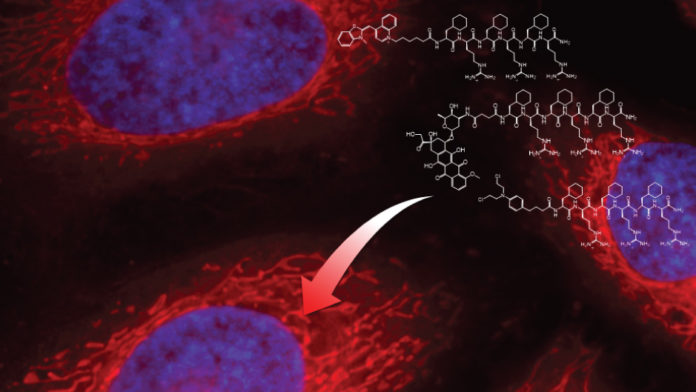Drug discovery is one of the most time-consuming and costly endeavors in modern medicine. Pharmaceutical companies invest approximately one billion dollars and two decades of work to develop a single commercially available drug. This process is riddled with unexpected challenges, leading to only one out of 2,000 promising drug candidates making it to clinical trials.
Currently, there is an unmet need for the development of new anticancer drugs; in particular, those that remain effective until a tumour is eradicated. One of the major challenges in developing these products is that tumours can develop resistance to existing chemotherapy treatments, in particular, small molecule DNA-damaging agents such as doxorubicin and cisplatin. Tumour cells can evolve to ensure their survival by producing resistance factors in large amounts. These resistance factors negate the effects of chemotherapeutics, rendering them inactive over the course of a treatment.
To this end, Prof. Shana O. Kelley’s research group at the University of Toronto has found a shortcut to discovering effective drugs by repurposing and enhancing existing ones to overcome drug resistance.
The Kelley lab has developed a delivery system that can redirect drugs to an area of a cell where the tumour resistance mechanism will not affect their activity – the cell’s mitochondria. Mitochondria are like the batteries of our cells: small, self-contained compartments that continuously produce energy to power cell life and growth. While having critical function in energy production, mitochondria also have key roles in cancer cell death. Although both healthy cells and cancer cells contain mitochondria, the mitochondria of cancer cells have different physical properties which preferentially allow the delivery system to access them.
By targeting drugs to this functionally important compartment of the cancer cell, the delivery system developed by the Kelley Lab can eliminate tumours by cutting off their supply of energy. More importantly, when drugs are targeted to the inside of mitochondria, they are hidden from resistance factors. You can imagine that drugs are using mitochondria as an invisibility cloak so they can remain unseen by tumour resistance factors that are trying to undo their work.
Another unique application of this targeting technology is that it can be used to identify previously unknown drug targets that function inside mitochondria. The Kelley lab highlighted a powerful screening approach, which uses a combination of mitochondria-targeted drugs in order to reveal functionally and clinically relevant targets, which could be used to produce further innovation in cancer therapy.
Developing a new anticancer drug that is both potent and safe is an arduous yet important task. By recycling and enhancing old drugs, we present a promising alternative approach to developing effective therapies.








































